

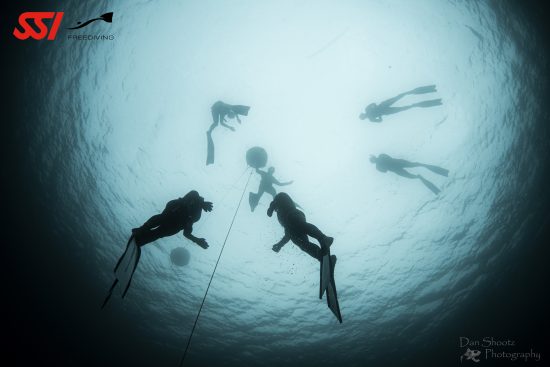
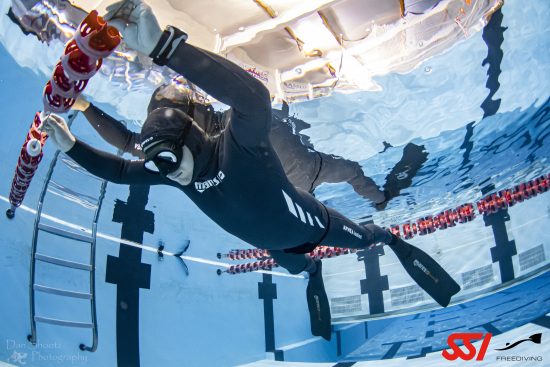
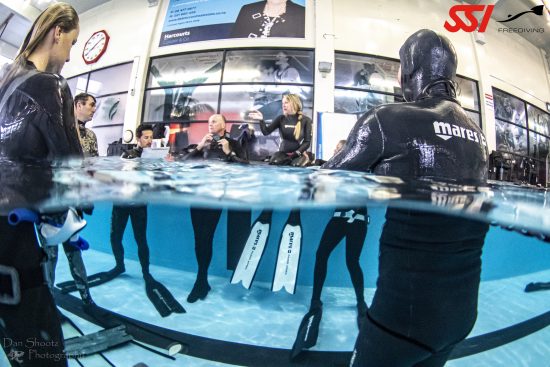
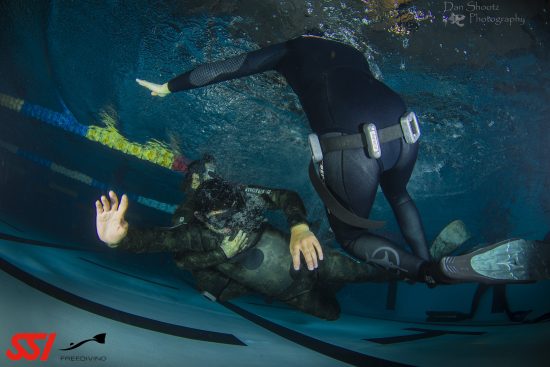
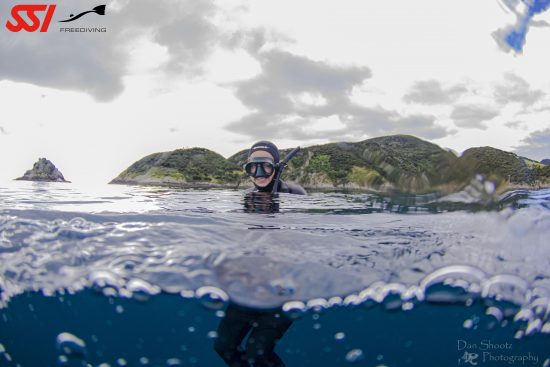
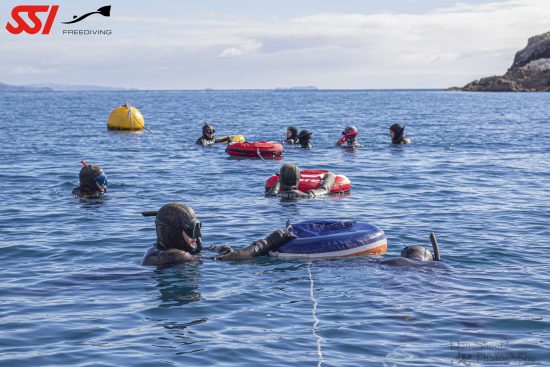
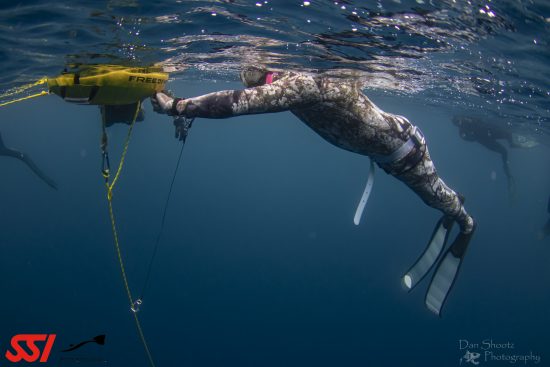
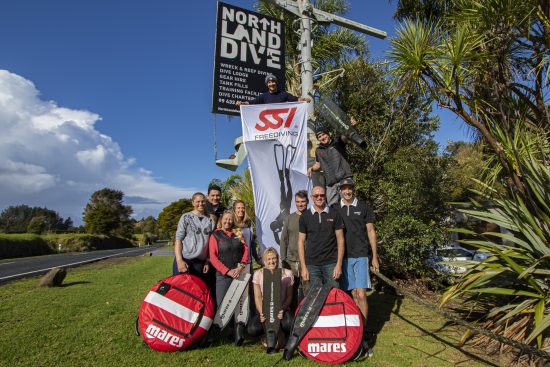

Freediving is an amazing feeling, some say that it's as close as you can get to flying, some liken it to an out-of-body experience, but one thing that is agreed on is that freediving is an incredibly unique sport and more and more people are joining the community by the day. Someone needs to teach all those future freedive fanatics, so I tagged along on an SSI Freedive Instructors course to see what it takes to teach such a unique sport.
Before class
As many of you know, SSI provides a convenient way to complete your diving certifications as you can do the theory work in your own time, giving you a good idea of what you will be doing once you arrive in the class. It should be noted that like scuba diving, freediving is a challenging activity, and you should be in good health. Because of the physical toll freediving takes on your body, a full medical, a First Aid course and the React Right Oxygen Provider or equivalent is required before embarking on your freedive instructing journey. You should have also completed the SSI level 1 and 2 freedive courses to ensure you have correct techniques, or you should at the very least be a very competent freediver.
As per the pre-requisites, instructor candidates had been training hard to meet the depth and time requirements. They had come from all over the South Pacific - From the icy cold, dark waters of Picton to the warm lagoons of Fiji and everywhere in between, they were all here at SSI HQ in Auckland to undertake their Freedive Instructor course.
Theory Sessions
The course began in the classroom where our instructor discussed her own incredible experiences - 7 minute breath holds and dives in excess of 70m meant the jaws of almost all the students were on the floor by the end of her introduction. Something to aspire to, but not what they were here for. This course was about learning how to teach basic freediving to depths of 20m and ensure all students were safe throughout the training.
Over the next few sessions, instructors learnt about the importance of the mammalian dive reflex, breathing and relaxation, a crucial part of freediving. Although incredibly uncomfortable, dry breath holds were used to reiterate the importance of breathing deeply, slowly and staying relaxed. By the end of these sessions everyone had doubled their breath holds easily, so it was now time to take what they had learnt on land below the surface.
Pool Sessions
The next few days continued with theory sessions in the morning and then a pool session in the afternoon.
During these sessions, instructors practiced rescues and the main pool disciplines including dynamic swims (DYN), dynamic swim with no fins (DNF), static breath holds (STA) and the techniques associated with them. The pool, being a safe, confined environment with warm temperatures and no currents was an ideal location to learn these important freediving skills, practice techniques and finally get assessed on them.
The second aspect of the pool session was the teaching. After being able to correctly demonstrate a drill, all instructors were taught how to teach the skill and what mistakes to look for. Each day, a student was given a technique to teach to the class and by the end, everyone was very competent at teaching various techniques and skills in the pool.
The most important role of being a freedive instructor is being able to rescue someone so before heading out into the ocean. Everyone had to learn how and learn how to teach a rescue. A variety of rescue techniques were repeated over and over again to perfection to ensure everyone had the core skills and ability to know when someone was about to blackout and how to rescue someone if they did blackout: TAP, TALK, BLOW !!
Open Water Training
Much like a scuba course, the instructors had completed their theory and pool training and were now to be rewarded with diving in the ocean!!
The final part of the course was to be undertaken in the Beautiful Bay of Islands with our hosts Northland Dive taking us out each day to freedive in the appropriately named Deep Water Cove. Relatively close to shore , sheltered and with deep, clear water on hand, this was the perfect location to run a freedive course.
Over the next few days, the instructors learnt how to set up lines, floats and how to manage the group safely in an open water environment. Following this, the instructor candidates were asked to demonstrate and then learn how to teach the three open water freedive skills. Free immersion (FIM), constant weight fins (CWT) and constant weight no fins (CNF).
To complete their vigorous week of training, the instructors were finally put to the test with vigorous drills and rescue procedures including repetitive dives to depth with short surface intervals, long surface tows and blackout rescues from depth. Although intense, these drills would ensure that the instructors were ready and capable for whatever emergency scenario could be thrown at them.
After completing their academic presentations and showing the instructor trainer that they had what it took to teach freediving, all students proudly accepted their Freedive Instructor certifications. Freediving can lead to endless opportunities in the underwater world including mermaiding, snorkeling and much much more!!
So what are you waiting for? Dive into the breathless world of freediving NOW!!
Congratulations to all the new Freedive Instructors, it was great to meet you all, and best of luck with all your freediving ventures!!
 Dan
Dan 1st April 2020
1st April 2020